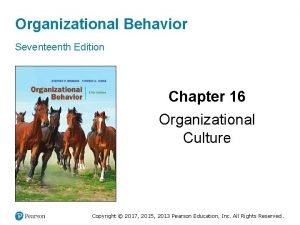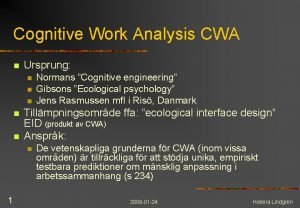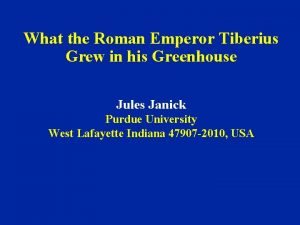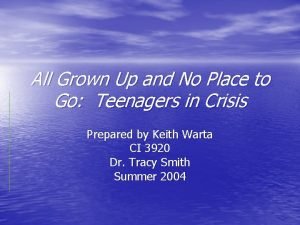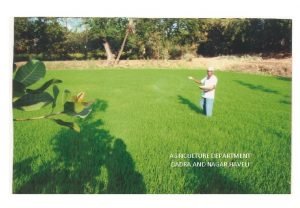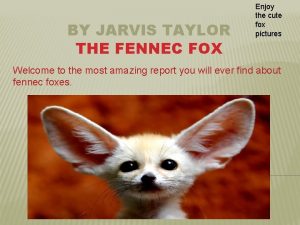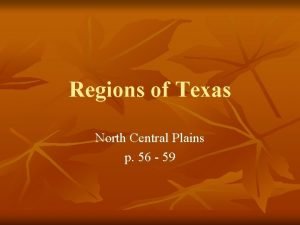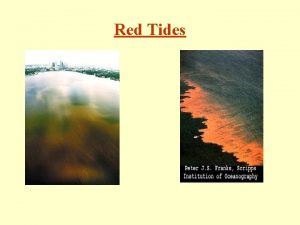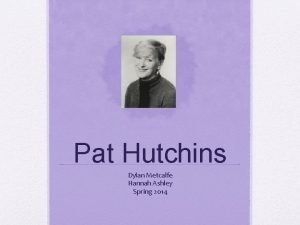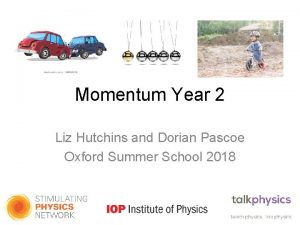Hutchins et al 2007 Trichodesmium cultures grown under













- Slides: 13


Hutchins et al. (2007) Trichodesmium cultures grown under different CO 2 and temperatures Meta analysis (Findlay et al. 2011) on E. huxleyi cultures shows that after p. CO 2 and TA, P concentration controls PIC: POC response

1. 4 1. 2 PIC: POC 1 0. 8 0. 6 0. 4 Long daylight period 0. 2 Short daylight period 0 0 500 1000 1500 p. CO 2 (µatm) Study PIC: POC Growth rate Daylength Iglesias-Rodriguez et al. (2008) ↑ ↓ 12 h Unpub. data, Bretherton ↔ ↓ 14 h Hoppe et al. (2011) ↓ ↔ 18 h Shi et al. (2009) ↓ ↔ 24 h

1 0. 8 0. 9 Ambient High CO 2 Coccosphere thickness (µm) 0. 8 0. 7 µ (d-1) Ambient 0. 6 0. 5 0. 4 0. 3 High CO 2 0. 4 0. 2 0 14 h 24 h -0. 2 -0. 4 0. 1 0 14 h L: D Cycle 24 h -0. 6 L: D Cycle

0. 6 Ambient High CO 2 0. 5 Fv/Fm decreases slightly in continuous light cultures – stress? Fv/Fm 0. 4 0. 3 0. 2 0. 1 0 14 h L: D Cycle 24 h

14 h daylight period: calcification maintained, but at the cost of growth rate 24 h daylight period: no change in growth rate, but cultures produce excess coccolithes

Species Strain Date of isolation Location of isolation Emiliania huxleyi PML 70 -3 02/07/2011 Northern North Sea Emiliania huxleyi PML 124 -3 25/06/2011 Bay of Biscay Emiliania huxleyi RCC 962 29/10/2004 French Polynesia Gephyrocapsa oceanica RCC 1804 09/12/2008 Sipadan, Malaysia Coccolithus pelagicus PLY 182 1958 English Channel Ochrosphera sp. RCC 1366 22/02/1998 Palau, Micronesia

0. 7 Ambient High CO 2 0. 6 0. 5 0. 4 µ (d-1) 0. 6 14: 10 h 0. 3 Ambient High CO 2 0. 3 0. 2 0. 1 0 0 E. huxleyi G. oceanica Species 24: 0 h E. huxleyi G. oceanica Species

0. 4 Ambient High CO 2 0. 3 0. 2 0. 1 0 0. 5 Coccosphere thickness (µm) 0. 5 14: 10 h 0. 4 Ambient High CO 2 0. 3 0. 2 0. 1 0 -0. 1 E. huxleyi G. oceanica -0. 2 -0. 3 -0. 4 E. huxleyi G. oceanica Species 24: 0 h Species

14: 10 h 0. 6 0. 5 0. 6 Ambient High CO 2 0. 5 Ambient High CO 2 0. 4 Fv/Fm 0. 4 24: 0 h 0. 3 0. 2 0. 1 0 0 E. huxleyi G. oceanica Species

Species/Strain E. huxleyi NZEH E. huxleyi 962 G. oceanica 14 h 24 h Calcification ↔ µ↓ µ ↔, produces lose lithes Thin coccosphere calcification ↔ µ↓ µ ↔, produces lose lithes Calcification ↓ µ↓ µ ↓, produces lose lithes Shipboard experiments from the Arctic Circle and Southern Ocean Meta-analysis of all OA literature to see whether or not L: D controls the observed response

Discrepencies in OA response can be explained by L: D cycle is an important consideration for OA experiments Local changes in L: D cycles in nature as climate changes

Acknowledgements Supervisors Dave Suggett and Tracy Lawson Richard Geider the Algal Research Group at University of Essex Mark Moore and Alex Poulton I am in the third year of my Ph. D and looking for more research opportunities! lmjbre@essex. ac. uk
 Shade grown coffee vs sun grown
Shade grown coffee vs sun grown Spiritual organization
Spiritual organization Helena hutchins
Helena hutchins John hutchins machine translation
John hutchins machine translation Hutchins commission
Hutchins commission Luciuis
Luciuis Maui grown coffee
Maui grown coffee Father of english drama
Father of english drama All grown up and no place to go
All grown up and no place to go 59 swans poem
59 swans poem Crops grown in dadra and nagar haveli
Crops grown in dadra and nagar haveli Fennec fox body parts
Fennec fox body parts No more lives torn apart
No more lives torn apart North central plains major cities
North central plains major cities

